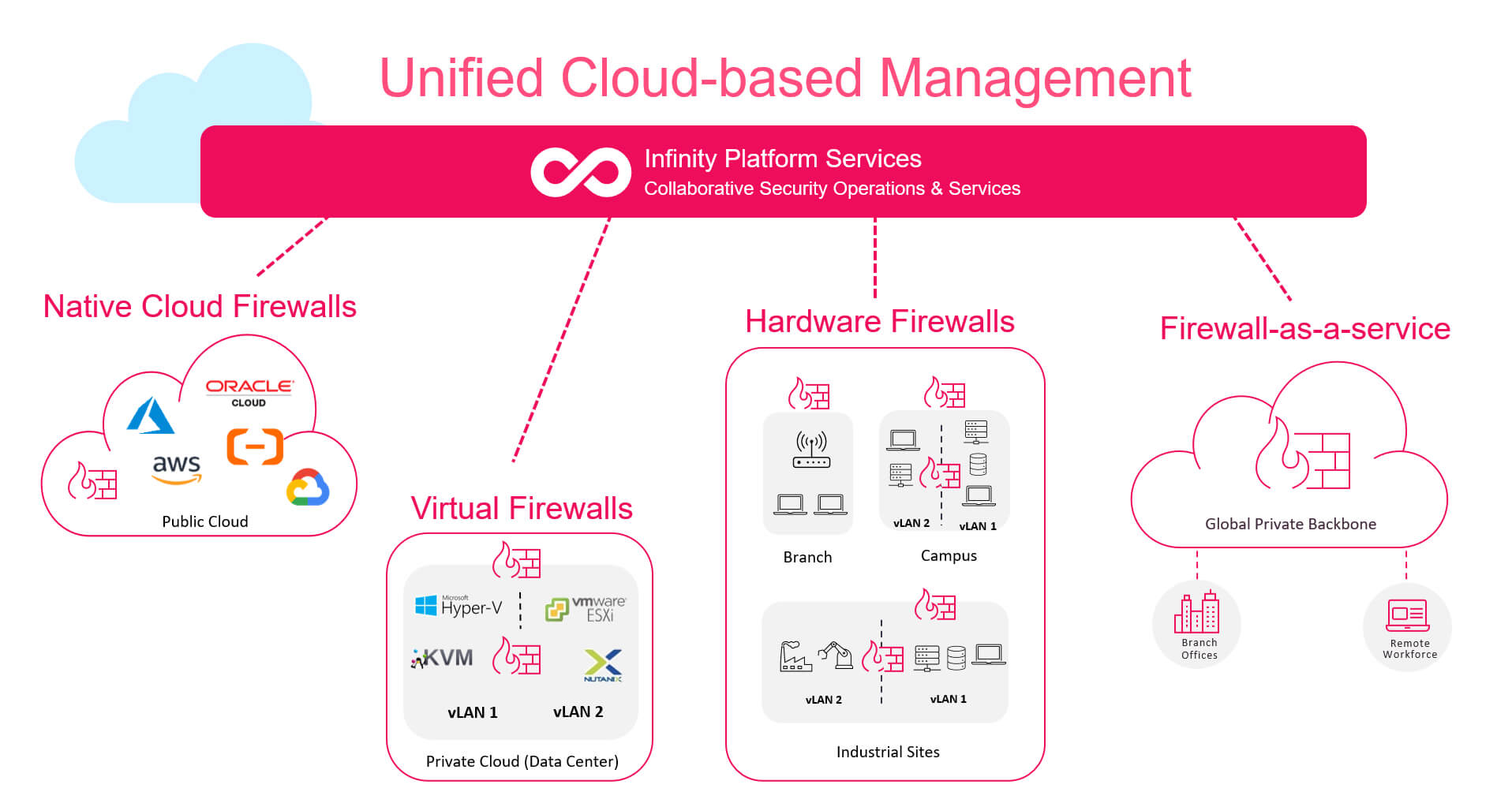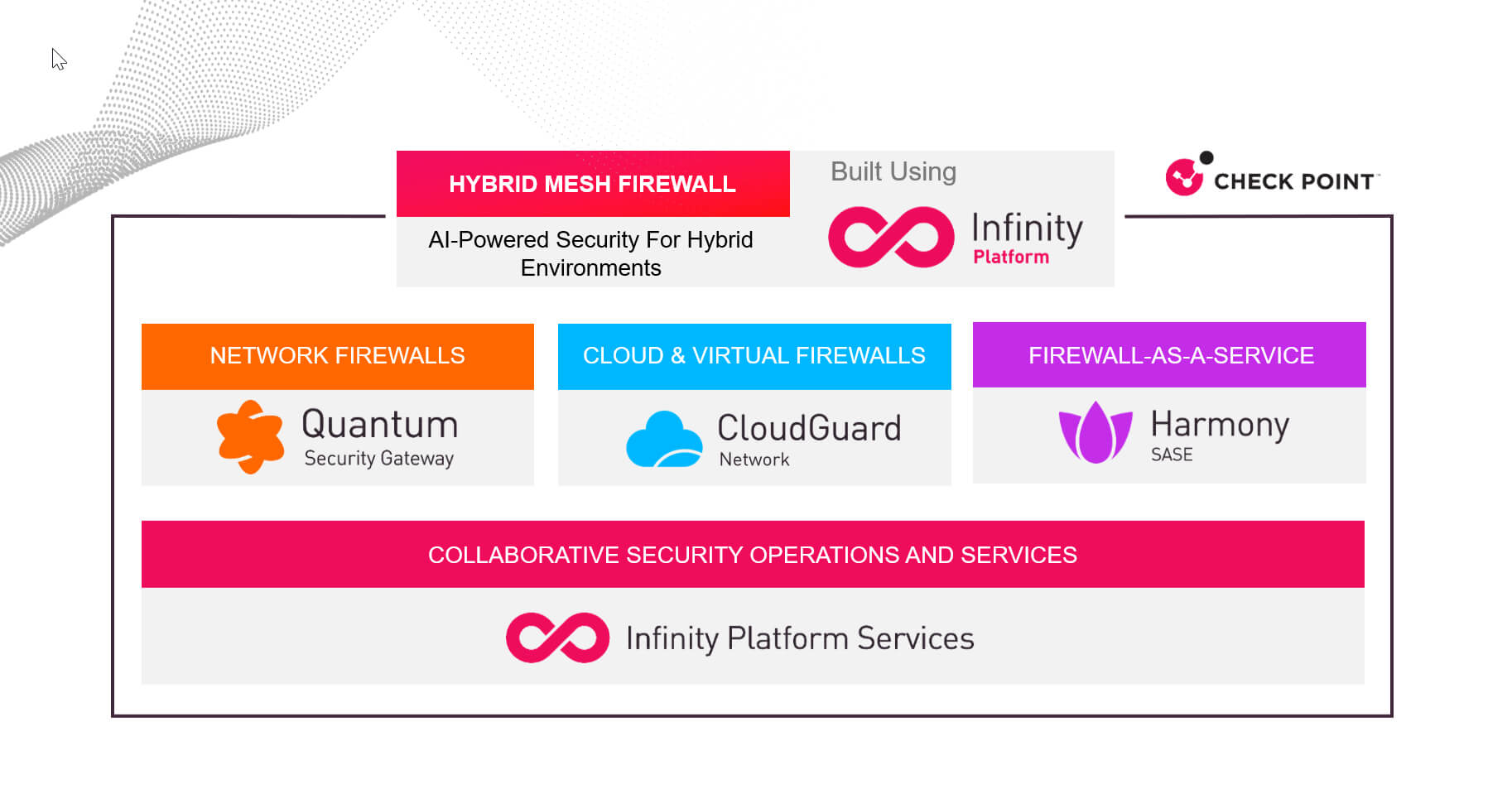
The 4 Biggest Challenges for the Hybrid Enterprise and What CISOs Need to Solve Them
Organizations are no longer relegated to centralized datacenters, but most aren’t fully remote or in the cloud: their data and operations increasingly follow a hybrid model. This shift is driven by distributed teams, including branch offices, work from home, and roaming work, as well as the benefits of scalability and flexibility offered by the cloud.
Adopting a hybrid environment is unavoidable, and Gartner anticipates that “By 2025, over 50% of network firewall deployments will involve more than two deployment factors from the same vendor — up from less than 10% in 2023.”[1] While the benefits of this new ecosystem are vast, it increases the complexity of security and management.
As CISOs contend with balancing security with business needs, they must grapple with strengthening cyber resiliency across all infrastructure while managing multiple firewall types. They are thus faced with a new set of operational challenges that must guide their choices when designing a hybrid security framework and maintaining an acceptable security posture.
The best-of-breed approach of point solutions is often operationally unsustainable, prompting enterprises to choose a Hybrid Mesh Firewall platform.
What is a Hybrid Mesh Firewall platform?
According to the inaugural 2024 Gartner® Market Gude for Hybrid Mesh Firewall Platforms, “A hybrid mesh firewall (HMF) platform is a multi-deployment firewall including hardware and virtual appliance, cloud-based, and as-a-service models with a unified cloud-based management plane. It is built to support hybrid environments and evolving use cases by offering mature continuous integration/continuous delivery (CI/CD) pipeline integration, native cloud integration, and advanced threat prevention capabilities extending to Internet of Things (IoT) devices and DNS-based attacks.”
At its most basic, a HMF platform offers multiple firewall form factors, centralized management, and integration with third party tools such as Identity Providers and CI/CD integration and others, to mitigate the complexity of using multiple point solutions from several “best-of-breed” vendors. A fragmented “best-of-breed” approach results in an unwieldy arsenal of tools that further lead to management complexity, high maintenance overhead, siloed visibility, inconsistent policy enforcement, procurement fatigue and varying levels of security effectiveness across the IT infrastructure.
To ensure their organization’s security and business needs are met, CISOs must evaluate potential Hybrid Mesh Firewall platforms against several core challenges and the capabilities that can address them.

Hybrid Mesh Firewall Architecture with Check Point Infinity Platform
The Main Challenges of a Hybrid IT Environment
While there seem to be an endless number of difficulties in securing and managing a distributed ecosystem, the main pains CISOs face can be boiled down to four, as follows.
#1 – Increased risk of breaches across multiple environments
Each working environment requires individualized enforcement points, increasing the risk of cyber vulnerabilities and breaches. This requires the deployment of several different kinds of firewalls, including on-premises, virtual, cloud native and firewall-as-a-Service.
This sort of multi-firewall ecosystem needs to integrate with diverse systems and controls, including IoT (Internet of Things) devices, Cloud Security Posture Management (CSPM) and SD-WAN. Security teams often don’t have the manpower or bandwidth to learn the details of multiple tools from different vendors, resulting in security gaps and a weakened risk posture.
Solution: Achieving consistent threat prevention and zero trust
These issues can be addressed by a consolidated architecture that offers essential threat prevention capabilities:
- AI-powered : A HMF infused with AI/ML capabilities can identify zero-day malware and phishing by relying on big data and threat analysis rather than existing indicators of compromise (IoCs).
- Global propagation of threat intelligence: Advanced platforms can share intelligence of zero-day threats across all enforcement points globally in seconds, including to cloud firewalls, firewall-as-a-service (FWaaS), endpoints and mobile security.
- Virtual patching against the latest vulnerabilities: A platform with an advanced intrusion prevention system (IPS) works to virtually patch against the latest vulnerabilities (CVEs), keeping your systems, servers and applications secure even if your IT department has not had time to patch these individually
- Other advanced capabilities: Recursive DNS security and advanced endpoint solutions are needed to block and contain threats for process-level protection.
- Support for zero trust initiatives: To support zero trust initiatives across your IT environments, HMFs should offer granular policy enforcement using attributes such as user, machine, device identities, data sensitivity, target application, and risk.
#2 – Compliance complexity
By default, the hybrid IT environment is indicative of silos of multiple technologies and teams. The disparate ownership over different security tools and security operations can cause a compliance nightmare for CISOs.
When organizations secure their attack surface using multiple best-of-breed solutions, the result is a Swiss cheese-type infrastructure riddled with blind spots. It becomes extremely challenging to maintain compliance consistently while managing multiple products and their unique policies.
Solution: Unifying visibility and forensics
A Hybrid Mesh Firewall platform can ease the need for multiple vendors, but there still needs to be cohesion between teams and environments. Look for specific features that enable unified visibility and incident response, such as:
- Unified console: A single pane of glass dashboard can break down silos and foster collaboration between teams, enabling streamlined logging and unified event management across firewalls, .
- Consolidated visibility and logging: What if you could see all the logs and events in your environment in one place, across clouds, remote users and office networks? Since visibility is key to passing audits, demonstrating compliance, and carrying out forensic investigations, this kind of consolidation can save hours if not days.
#3 – High administration and operations overhead
The lack of cohesion among point solutions forces administrators to move between multiple consoles to create and update policies and keep security controls up to date. This forces IT staff to spend time and resources learning new features and dashboards and furthers the risk of security breaches.
Solution: Consolidating and automating management
A consolidated solution is needed to eliminate silos and centralize management for increased visibility and efficiency. Look for:
- A cloud-delivered management system: A cloud-delivered platform enables teams to run with the latest security engines, features and controls with continuous, non-disruptive updates.
- Agility to transition and manage workloads: HMFs should give you the freedom and agility to manage workloads in any hybrid environment, with security serving as an enabler rather than an inhibitor across hybrid networks, workforces, and clouds. Key to this capability is automated policy enforcement per workload type.
- Robust cloud support through integrations with cloud service providers: By integrating with cloud service providers, the HMF tracks changes and dynamically adjusts policy enforcement to enable set-and-forget cloud security administration.
- Integration with enterprise security controls and architecture: When evaluating platforms, prioritize a vendor with built-in support or API-based integration with third parties to limit the manual administration of your team.
- Centralized incident response: A hybrid mesh firewall that delivers unified monitoring and alerting can facilitate extended detection and response (XDR) and managed detection and response (MDR) operations for proprietary and third-party security solutions.
- AI assistants: Generative AI assistants can reduce the time required to perform common tasks by up to 90%, enabling admins to quickly update policies, resolve tickets, and verify protections.
#4 – Procurement and budget limitations
Budgets are always a top concern, and with multiple enforcement types and different pricing models, securing a hybrid environment can be costly and unpredictable. A best-of-breed approach can add to the pricing and procurement complexity of multiple vendors.
Solution: Ensuring licensing flexibility to use any enforcement point
Using a Hybrid Mesh Firewall with an agile, predictable pricing model to accommodate evolving security needs allows organizations to respond to changing needs without requiring new licenses, purchasing approvals or vendor renegotiation. For example, a single per annum per user pricing structure that includes ALL subscriptions, hardware, software and support provides the flexibility to change enforcement points during the year as your IT needs change. While you may start the year with 30% of your firewalls in the cloud, 50% on-prem and 10% as FWaaS, you may want to transition to 50% cloud firewalls, 20% on-prem and 30% FWaaS. A flexible pricing model will let you make that type of transition without any change to your current vendor agreement.
Ready to Learn More?
Check Point Software Technologies is proud to have been recognized by Gartner® as a Representative Vendor for Hybrid Mesh Firewall Platforms. To download the report, click here.
The Check Point Infinity Platform is a cloud-delivered, AI-powered platform that sets a new standard in enterprise cyber security strategy, delivering a Hybrid Mesh Firewall that lets you meet the needs of tomorrow with confidence.
To learn more, download the solution brief or log in to the platform and start your test drive today!
You can find even more resources here: https://www.checkpoint.com/solutions/hybrid-mesh-firewall/

A Hybrid Mesh Firewall built using the Check Point Infinity Platform
[1] 2024 Gartner® Market Guide for Hybrid Mesh Firewall Platforms, 16 January 2024, by Rajpreet Kaur, Adam Hils. Used herein with permission. All rights reserved.
Gartner does not endorse any vendor, product or service depicted in its research publications and does not advise technology users to select only those vendors with the highest ratings or other designation. Gartner research publications consist of the opinions of Gartner’s Research & Advisory organization and should not be construed as statements of fact. Gartner disclaims all warranties, expressed or implied, with respect to this research, including any warranties of merchantability or fitness for a particular purpose.



